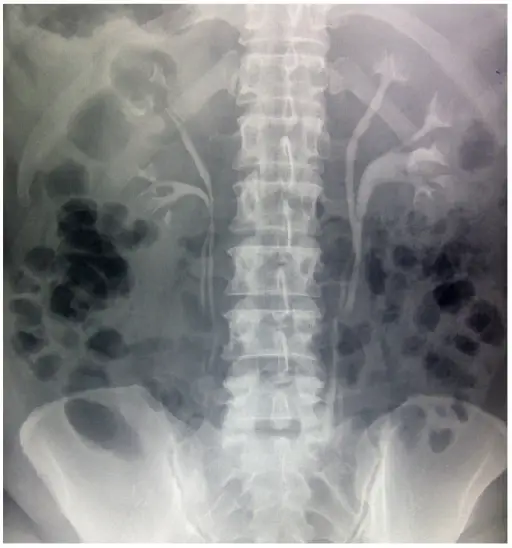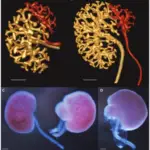Double ureters or duplex collecting system is a congenital condition in which the ureteric bud, the embryological origin of the ureter, splits or arises twice.
What is the Pathology of Double Ureters?
The pathology of double ureters is:
-Etiology: The cause of double ureters is an incomplete fusion of the upper and lower pole of the kidney which creates two separate drainage systems from the kidney.
-Genes involved: None.
-Pathogenesis: The sequence of events that lead to double ureters begins in the human fetus around the 4th week of embryonic development. A ureteric bud division gives rise to two separate parts, each with its renal pelvis and ureter.
-Morphology: The morphology associated with double ureters shows partially duplicated ureters fused into a single ureter proximal to the urinary bladder, which is also known as bifid ureter.
-Histology: The histology associated with double ureters shows characteristics as seen in a normal ureter.
How does Double Ureters Present?
Patients with double ureters typically affect females in the neonatal period or early childhood. The symptoms, features, and clinical findings associated with double ureters include palpable abdominal mass in the newborn and may suggest an ectopic ureter or ureterocele. In older children, ureteral duplication may present with urinary tract infection – most commonly due to vesicoureteral reflux.
How is Double Ureters Diagnosed?
Double ureters is diagnosed by hydronephrosis in a postnatal follow-up examination or by the presentation as a urinary tract infection in a neonate.
How is Double Ureters Treated?
Double ureters are treated with ureteroureterostomy
What is the Prognosis of Double Ureters?
The prognosis of double ureters is excellent with appropriate management. Antibiotic suppression is usually warranted in newborns with hydronephrosis or in patients who present with UTI until the diagnosis is made and reflux is ruled out.



